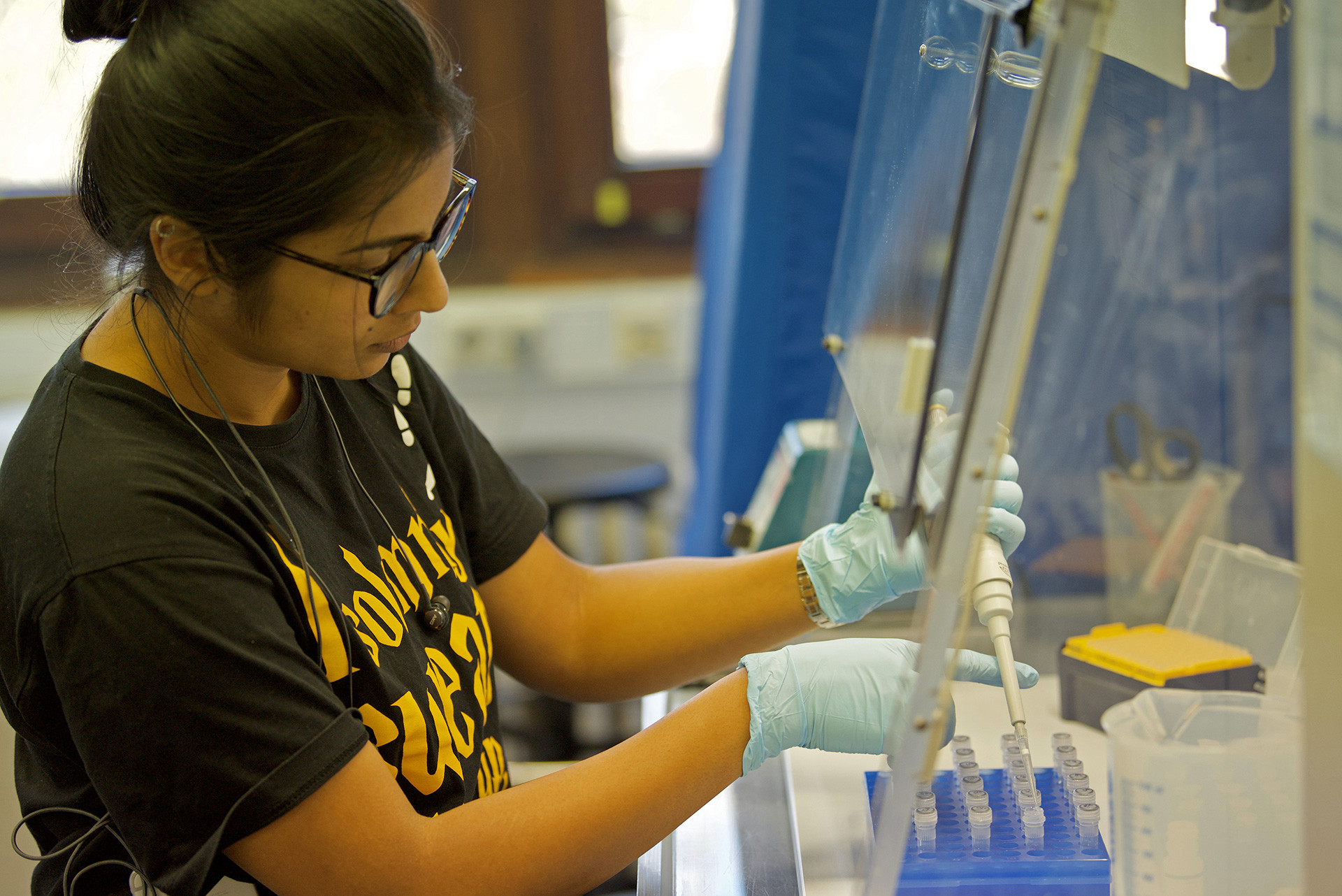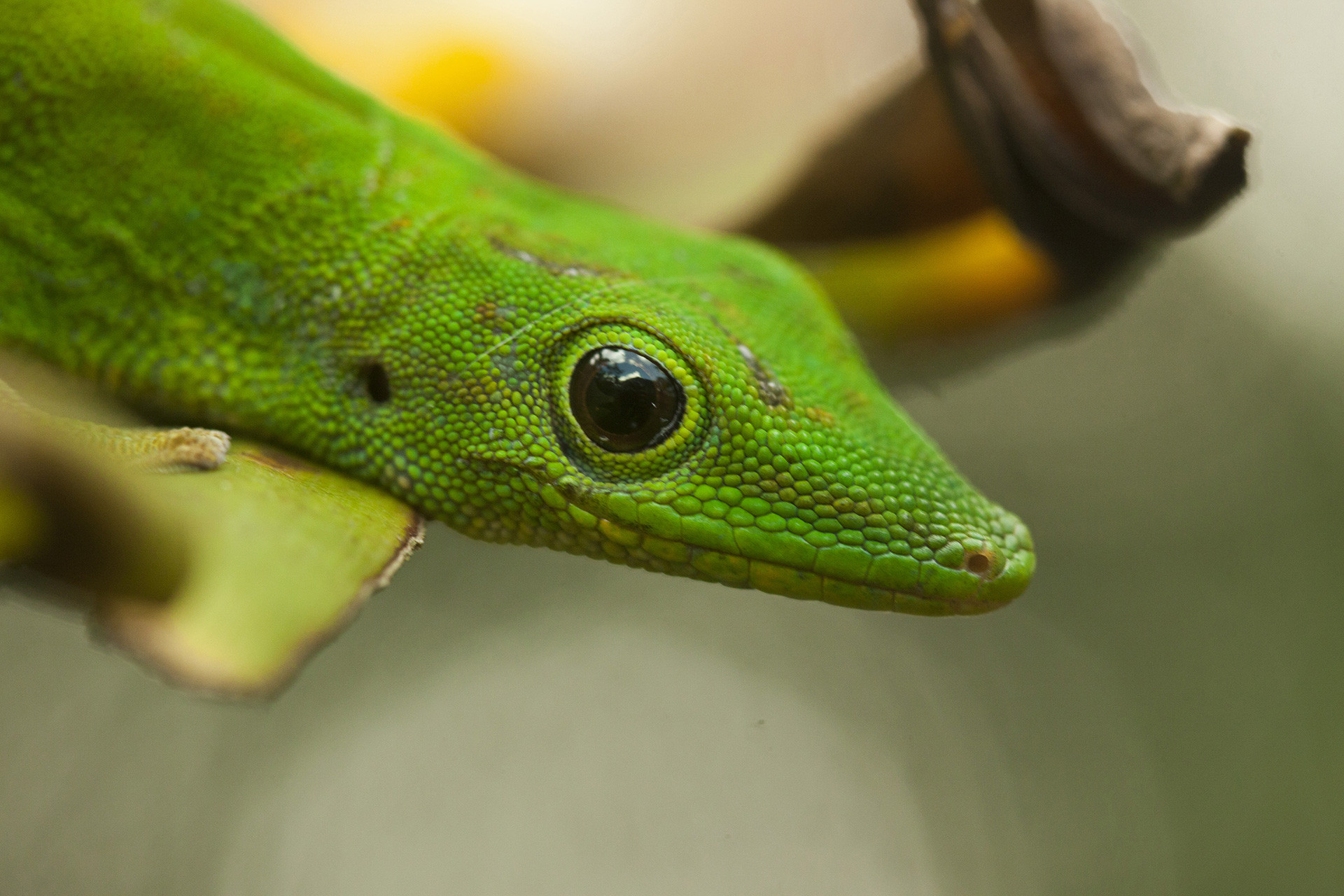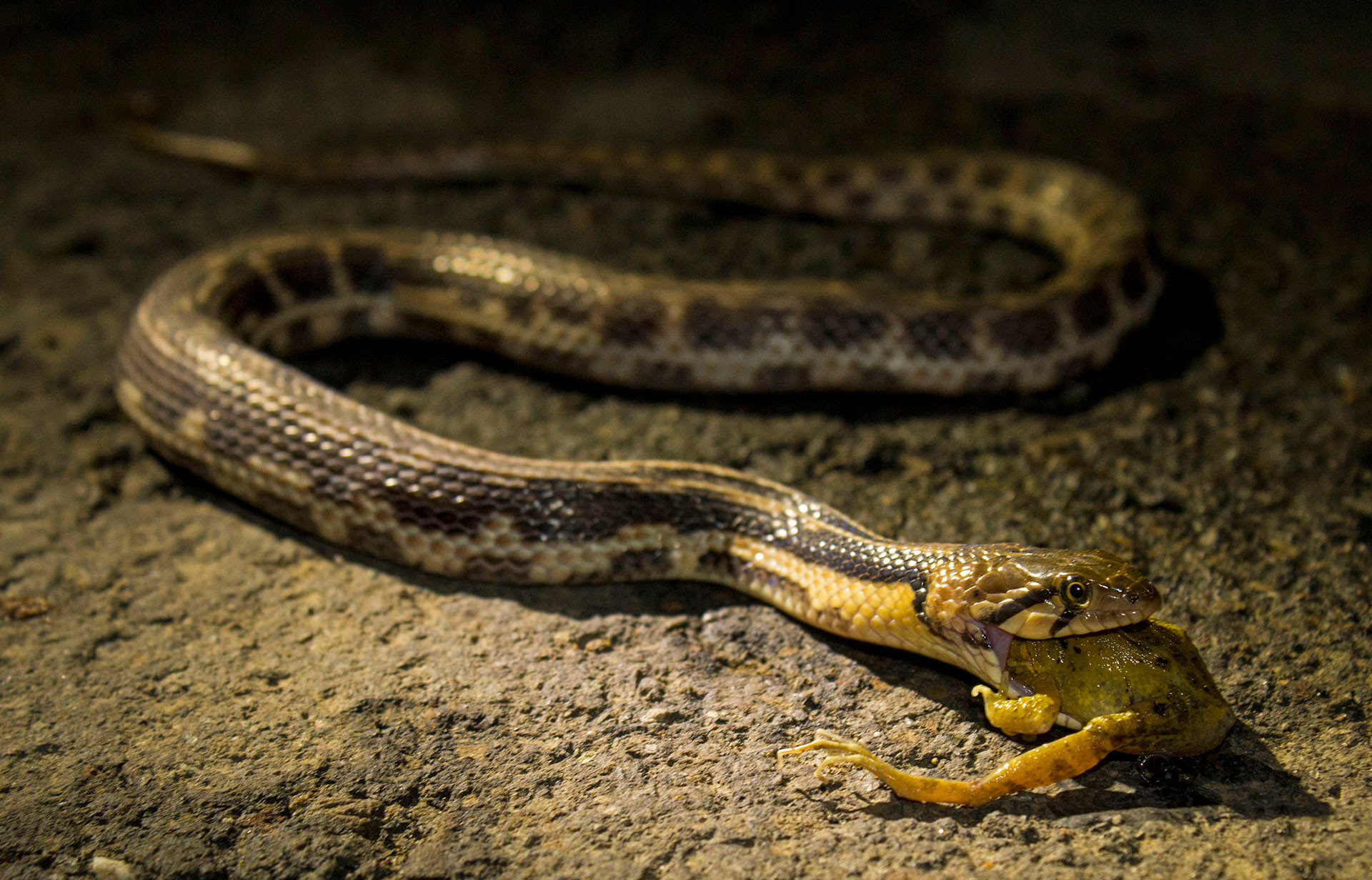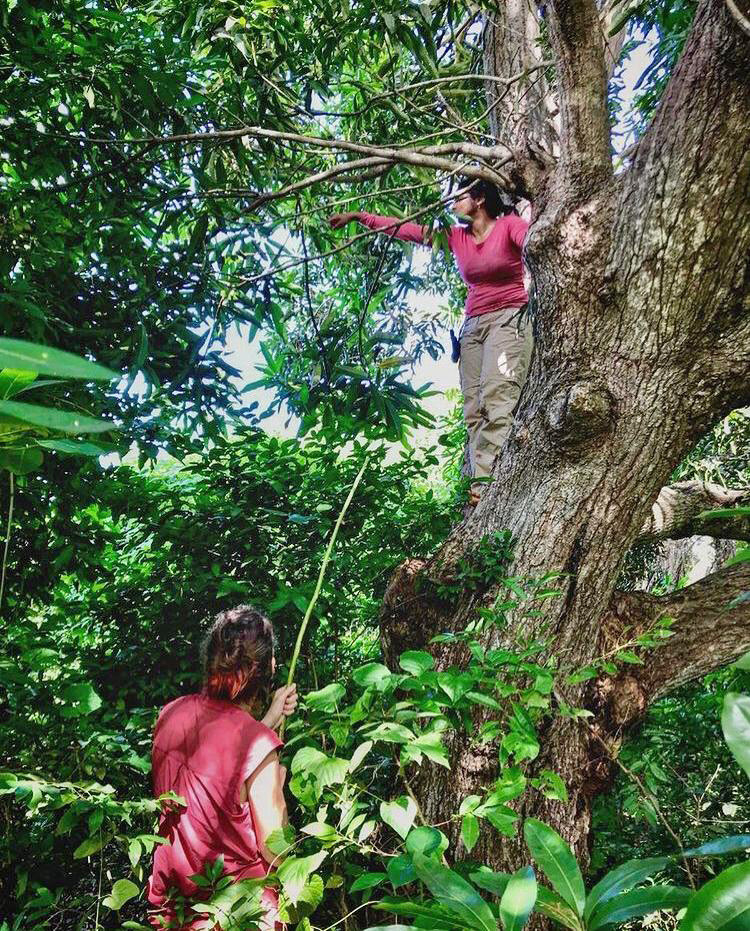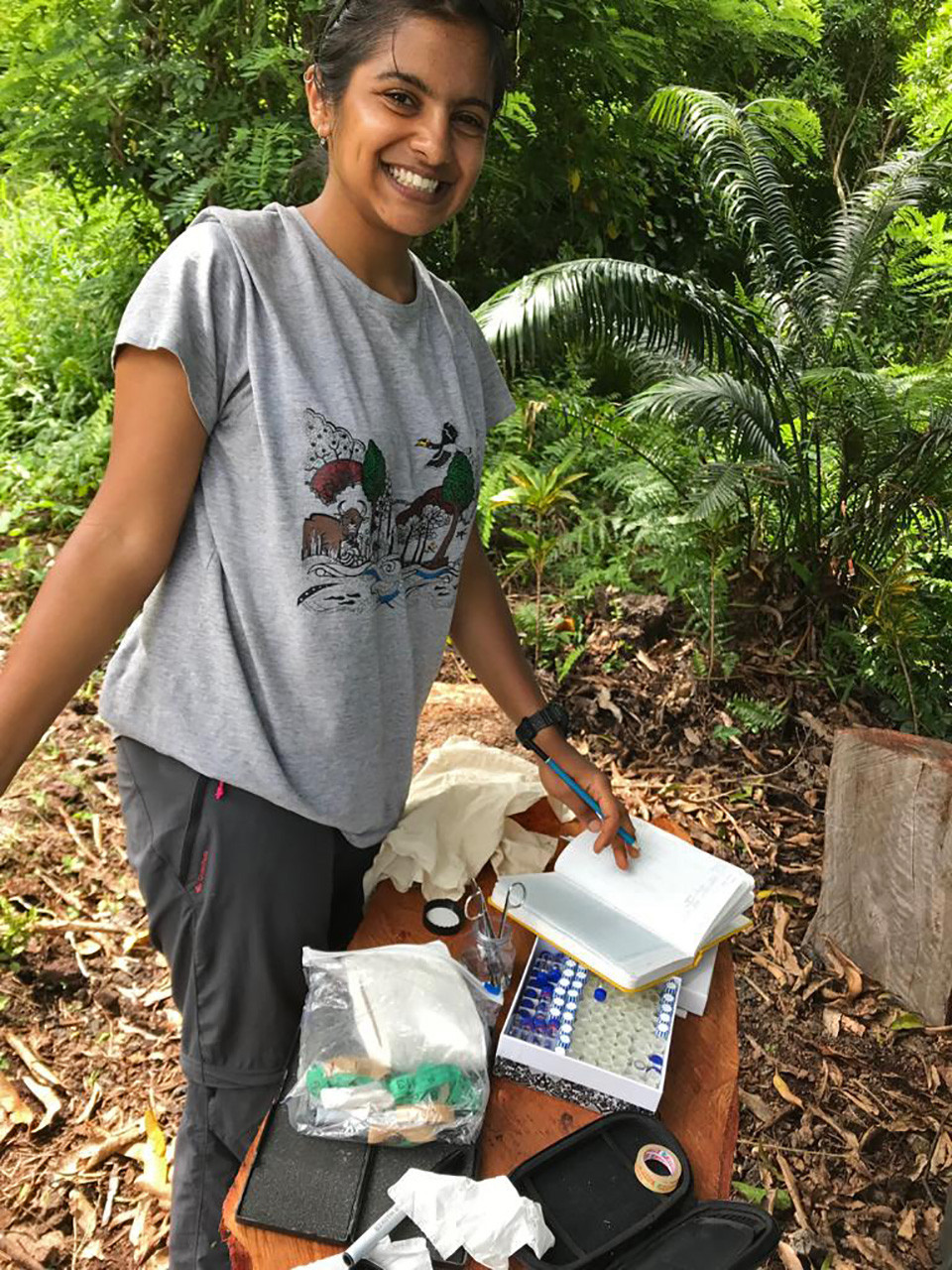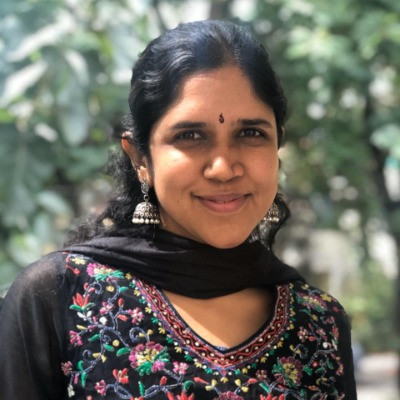When your editor asks you to prepare for an interview with one of India's leading early-career herpetologists, what do you do? You read up on her research (pretending to understand some of it), check her social media accounts to learn about the causes that she is passionate about, read her articles and then jot down well-reasoned questions and go over them on the day of the interview. Or you throw caution to the wind and ask her the one thing that has been a constant puzzle for you – why herpetology?
Luckily for me, Ashwini Mohan was gracious enough to take this question in the right spirit, and, to my relief, responded first with a laugh and then by saying – "this is the one question that I get asked constantly." She explained that the portrayal of reptiles in movies and mainstream media definitely has an impact on the way people perceive them. But she is working hard to change that notion every day, not because we must all simply get rid of our ophidiophobia, but so we can start to understand the vital roles reptiles play in various ecosystems.
Born and raised in Bangalore, Karnataka, Ashwini is currently pursuing a Marie Curie Postdoctoral Fellowship at the prestigious Natural History Museum, London. She recently completed her PhD from the Technical University of Braunschweig in Germany, where she specialised in herpetology, comparative phylogenetics, population genetics and evolutionary biology. She has published numerous peer-reviewed papers on reptiles and other organisms in island and forest ecosystems, including identifying a new species of lanternfly that is endemic to the Andaman Islands and a rock-dwelling gecko from the Agasthyamalai Hills in the Western Ghats. She is an ardent voice for female representation in the field of herpetology as well as science in general.
In this interview, Ashwini talks about her journey, her research, being a 'herper' and encouraging more women across the country to join the tribe, and how social media has now become a valuable tool for science communication. Over to Ashwini Mohan.
On your website, you talk about how growing up close to the Western Ghats inspired you to explore the field of evolutionary biology with a focus on terrestrial reptiles. Tell us a little bit about this journey.
I grew up in Bangalore, close to the Western Ghats, but the realisation of what that meant came to me much later. As a child, I took the rain and all the greenery around me for granted. Because we had family in different parts of Karnataka, we used to travel a lot around the state. I used to spend my summer holidays with cousins in Mysore, which was right next door to tiger reserves. I never thought of it as something special. One could take an overnight bus from Bangalore and by morning be in a rainforest! It was towards the end of my bachelor's degree in genetics when I took up a credit course where I was introduced to ecology and rainforests. Funnily enough, the first-ever rainforest I visited thinking about ecology was not anywhere in the ghats but was in Sri Lanka, and I came back home with lots and lots of images of reptiles. I had a great time spotting them, observing them, and taking pictures of them. After I got back from Sri Lanka was when I realised the importance of living so close to the Western Ghats. I could attend different camps on reptiles and start an internship in Agumbe. Being from the same place, knowing the local language and having my family close by were certainly advantages. The more I started venturing into the Western Ghats, the more it inspired me because there is so much to see and learn.
When did you decide that you wanted to pursue an academic career to explore this interest further?
I did my bachelor's degree in Bangalore, where I studied genetics along with biotechnology and biochemistry. By the end of the course, I knew that I wanted to pursue biology because it was a subject that was very intuitive to me. I also got more interested in the ecology side of things. I had the privilege of taking a break to pursue an internship at Agumbe, where I worked with wildlife biologist P. Gowri Shankar of the Kalinga Centre for Rainforest Ecology. The internship also introduced me to researchers at the Indian Institute of Science (IISC) and opened doors for other molecular lab-based internships. Because of my background in genetics, I was able to intern at Kartik Shanker’s laboratory at the Centre for Ecological Sciences at IISC. From extracting DNA to obtaining sequences and understanding how different organisms are related using molecular-level data, I could finally put theory into practice. The time in CES also facilitated me to attend several talks organised by the department, often by in-house researchers working on various ecological, behavioural, and evolutionary research or by visiting researchers from around the world. This slowly eased me into ecological sciences and rest seemed like a natural course.
A lot of your research was carried out in the Andaman and Nicobar Islands. How are islands ideally suited to understanding evolutionary processes?
If you go back to just thinking about how the idea of evolution came to be, several early researchers were able to understand these processes by looking at island systems. I think it is easier to do so because these are very delineated systems. You have a piece of land in the middle of the ocean that is physically separate from all other lands, marking a clear distinction. For the most part, island ecosystems seem a lot simpler to discern evolutionary processes and species relationships. To provide some context, if you go to some part of the Western Ghats, it would be much harder and/or trickier to understand food webs, species interactions etc., due to the sheer diversity of life there. But small island groups have fewer species and simpler ecosystems; this makes it easier to study ecological and evolutionary processes in islands.
On the flip side, because there are fewer components, the negative impacts of human activities on islands could also snowball quickly. For example, a road cutting through forests on large continental landmasses could have a relatively lower impact on species survival compared to a road running through forests of a small island due to the limited geographical distribution of species and smaller populations. So it comes as no surprise that the term ‘extinction’ was first used in the context of animals going extinct on islands! Biologists turn to islands even today to study evolutionary processes, and the term ‘island’ can be used in many contexts now e.g. habitat islands such as freshwater lakes or an isolated forest in the middle of tea plantations. Moreover, some of evolution’s most bizarre animals, like the Komodo Dragons or the Dodo, evolved on islands. Due to different pressures in islands when compared to continents, plants and animals tend to take a different course during their evolution. Sometimes, they become larger, like the Komodo Dragon, or smaller, like the extinct pygmy elephants in Sicily. Many groups of birds have also lost the ability to fly after reaching islands!
Can you tell us a little about your work in the Andamans?
I first went to the Andaman Islands to study populations of a freshwater snake, the endemic Tytler’s Keelback (Fowlea tytleri), and during this work, I got interested in geckos. I went back to study different gecko species, basically trying to map the species that are present in the Andaman and Nicobar Islands, to test how they are related to the other gecko species in India or southeast Asia.
While research has been done in several other island ecosystems around the world, compared to mammals and birds, reptiles have been poorly studied in terms of how their genetic diversity is distributed across a geographical area. As I mentioned before, islands can be very insightful because they have clear boundaries. Large mammal research has popularised the importance of genetic diversity by looking at threatened species and habitat corridors and how they aid in maintaining genetic diversity, and more. For small terrestrial reptiles whose populations are in islands, we don’t know whether there can be gene flow between different island populations. For example, more than 70 per cent of reptile extinctions worldwide have happened on islands, so clearly, island reptiles are more susceptible to extinction. Some geckos I studied are sensitive to saltwater, so I cannot imagine them swimming through the ocean. But then again, their eggs have a hard shell and can withstand sea journeys either through events such as cyclones or facilitated by us humans as we constantly travel between islands. An important factor is that, apart from the recently introduced reptiles due to human colonisation, most of the reptiles in the Andamans are endemic to the region. So, it is a system where you can ask various questions on origins, distribution, and ongoing evolution.
You have also been vocal about the lack of female representation in the field of herpetology. What are some of the biggest hurdles for women in this field and what measures can be taken to overcome them?
This is a very interesting and important question. If you think about it, more women enrol into biology/zoology at the Bachelor of Science (B.Sc.) level. But as we progress further, many or most do not venture into fields like ours, which is the bigger issue, and the ones who venture are unable to stick around long enough to obtain a long-term position. While individuals of all genders can choose by their will, this goes to show that there is something wrong with the system, because women, in particular, seem to drop out more. Surely, there are fewer women when compared to men, but even among those who choose herpetology, very few women end up in leadership roles. Therefore, there is a lack of representation, especially higher up the academic ladder or in decision-making roles.
There are other issues that women encounter. During the first round of lockdown, my friend Sneha Dharwadkar and I started talking to people about these issues and writing about the lack of female representation in the field. Some of the women we interviewed spoke about how they faced sexism in the office space or had safety concerns while doing fieldwork. But in my generation, there are a lot more women who aim to continue research and do conservation work in the field, and we hope things will slowly change. Also, it is important to mention here that we also need to encourage people who come from very different economic backgrounds and parts of the country. As research fields that are striving to study fundamental processes giving rise to and maintaining biodiversity, and how to conserve them, we need to be more inclusive.
Most importantly, these are not monetarily promising pursuits for the younger generation, which makes it even harder to attract people from diverse backgrounds. Very few can afford choices like these. So, keeping all this in mind, it becomes vital that efforts are taken to provide ample opportunities for women and people from diverse backgrounds.
Science communication has grown manifold and art and social media are becoming essential tools for this. Could you talk a little bit about how you use art and social media to talk about your work and wildlife conservation in general?
I don’t know if I am qualified to talk about art. There are so many incredibly skilled artists in India working towards science communication, who have brought about a revolution in the way the public perceives animals that are usually not seen in a positive light or not seen at all, like snakes or moths! To be very honest, I don’t think that I am doing as much art as I would like to do. I used to sketch a lot more, but towards the end of my PhD, I really couldn’t do much. So now I try to use social media to share some photographs or sketches, mainly of reptiles and amphibians, and share stories behind these photographs. I attempt to introduce people to wildlife not commonly known or famous and overall, I enjoy communicating science! Instagram has been key for science communication here in India as it is extensively used in the country by people from all walks of life. In the last two years, I have had the privilege of a number of collaborations to talk science to the public through workshops, and recently I also gave a presentation in my mother tongue, Kannada!
Social media has really grown into a valuable tool for science communication and to build collaborations for science communication. Even when I was not in the field of herpetology, I could follow related pages and content on Facebook. Every day, I would encounter new ideas, gather knowledge about species and find people to talk to or work with. There is a huge community of wildlife educators and science communicators who are trying to post about their work and making science accessible to the public. That is something that many scientists in the past were not able to do. Even when I was growing up, scientists seemed out worldly but today it has changed. Although I must stress that social media is a job by itself, and not everyone can start a podcast or write a blog every day, we can share something every now and then in the hope that our stories would get people interested in the natural world. So I try to post once or twice a month, and I try to do it as lightly as possible, so it does not tax me. A lot of people have contacted me in the last few years on social media asking how they can get into herpetology or what courses they can take. Many of us early-career scientists are still in that phase where we can engage in these conversations, and even if we don’t have time, we can suggest other people or places where they can keep an eye out for opportunities. I have had the fortune of having some great mentors early on in my journey, but this kind of outlet can definitely benefit by providing access to people that you cannot physically meet. I am glad such avenues are available now.
Speaking of mentors, can you tell us about the people who have inspired your journey?
Even before I started working in herpetology, I had heard about Romulus Whitaker. He was the face of many of the documentaries that I watched. As I mentioned earlier, one of my first internships was with wildlife biologist P. Gowri Shankar of the Kalinga Centre for Rainforest Ecology. He is one of the few scientists who has been focusing on one species but has been studying everything about it, which is very inspiring. Herpetologists and ecologists in IISc and otherwise, such as Kartik Shanker, S. P. Vijay Kumar, K. P. Dinesh, Rauf Ali, Praveen Karanth, and K.V. Devi Prasad mentored and pushed me to start asking questions. I was also able to interact with many students and scientists in Bangalore and in the Andamans, which is an experience that I greatly value. I particularly look up to several women faculty and conservationists around India and the world as they are a reflection of the kind of person, teacher, and scientist that I want to be.
What advice would you like to share with students who are interested in pursuing a career in the field of evolutionary biology & herpetology?
In India, we don’t have a bachelor's programme in ecology or evolution specifically, but that is not necessarily a limiting factor. These are scientific fields that benefit from other disciplines as well, such as mathematics, statistical thinking, mapping skills, and coding skills to name a few. Many successful wildlife biologists today started out as engineers. One could be an engineer who works on the mapping aspects, a zoologist who studies the physiology of species, or a computational biologist solving advanced biological problems. I would suggest that students should not limit themselves just because of their bachelor's degree. Also, if one can afford to take a break and pursue internships, I highly recommend it. Today you can always demand to be paid for an internship too. When I was an intern at IISc, they found a way to pay me, and this gave me a lot of confidence and allowed me to justify my work to my family. And these are justifications many of us must make.
Internships also help one understand what one doesn’t want to pursue, which I think is equally important. For instance, I did an internship in histopathology of cancer tissues and soon realised that it wouldn’t work for me. If one comes from a larger city, they are certainly at an advantage as many institution-based internships are in big cities. If one can’t take time off for an internship or travel to another place, following relevant researchers online and keeping an eye out for opportunities they post might help too. For example, Twitter is growing into a good space for academics, and many job postings are up on Twitter before anywhere else these days. Research assistant and lab assistant jobs that are temporary can give one the right exposure along with an income to survive big city life. Many of us in India spend all our lives studying without any breaks and enduring pressure from the society around us. But taking breaks can be very helpful if one can use that time to gain insights into potential fields to study in, and I urge students to take it if they can afford it. And lastly, reach out to professors because many of them are also looking for students, and they generally care to respond to queries.


